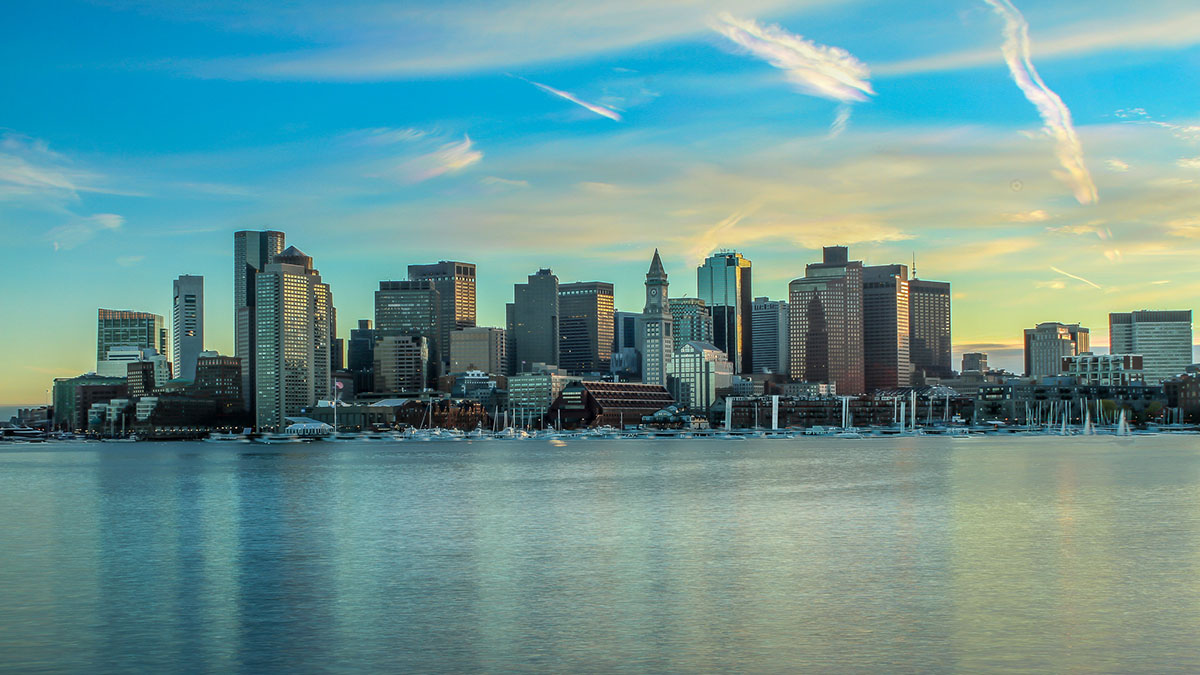Really? You Want Citywide Planning?

Boston skyline photo by Trenten Kelley on Flickr
Every 50 years seems like a rare enough occurrence to warrant a 24-hour celebration. And sure enough, to honor the launch of Boston’s first comprehensive planning in two generations, the BRA held the Innovative Design Alternatives Summit (IDeAS for short) on May 6 and 7.
The last time Boston invested in citywide planning, Bill Russell was playing for the Celtics, John Collins was mayor, Quincy Market was crumbling, and City Hall was only partway through construction. For the better part of a half century since then, Boston has been spot-planning rather than working with a single coordinated vision.
Those times are thankfully changing. Mayor Walsh sees the value of broader thinking, as he said in his keynote address on Wednesday afternoon at Faneuil Hall. This may herald the end of years of lackluster design and awkward urban growth.
Walsh described the new two-year initiative, which will usher in the “next generation and the next great era of design” so that the city can “grow more equitably.” Equity remains a stubborn consequence of Boston’s dependence on private markets and small-scale planning. It’s unaffordable for many. The city itself remains heavily segregated along racial and economic lines. Boston fails to provide equal access to its jobs, parks, transportation, and centers of education. We face enormous questions about the impact of climate change.
Equity became a constant refrain throughout the event’s 40-plus presentations by developers, designers, officials, community activists, advocates, and private citizens, including Tony Pangaro of Millennium Partners, Marc Draisen of the Metropolitan Area Planning Council, Vivien Li of the Boston Harbor Association, Stephanie Pollack of the Massachusetts Department of Transportation, and from the city, Julie Burros, John Barros, and Brian Golden. Can a comprehensive plan fix everything? Can it also help us get more imaginative architecture, inviting urban spaces, richly programmed parks, sustainably developed neighborhoods, smart densities, and thoughtful public artworks?
The short answer is: maybe. The plan’s effectiveness will only be as good as the investment we put into it, not just financially, but also in terms of the ambition of its creators. The city intends to engage the public in the process, as well as the design community at large. But even more important is the follow-through. That will determine whether the plan has real impact on future development, transportation, housing, schools, parks, and city amenities over the coming decades, or whether it gets shelved.
At the same time, the plan needs to be adaptable to the changing conditions of demographics, landscape, and climate. You think the weather is hard to predict in New England? Try figuring out what issues will be most pressing for the millions of people who will be living in this region in 2030. Many of the event’s speakers asked questions about the priorities and values we want to project into that future. Who are we designing the city for? How will growth shape equity and a sense of place?
Summit participants presented a number of exciting examples from cities like Chicago (especially Millennium Park), New York (the High Line), and London (its Olympic plans), but were short on specific outcomes and policy directives that might jumpstart the next two years. To get innovation like that here, we’ll need to do many things better than before, including engaging our most creative thinkers.
For example, we have an enviable community of brilliant minds affiliated with a collection of impressive architecture and design schools. The BRA should find ways to get these talents out of the classroom and into the streets. Cities like New York have “design excellence” programs that identify small, innovative design firms to lead civic projects. Design competitions for large-scale projects are common in Europe. Reforms to the BRA’s own cumbersome review processes—known as Article 80—could leverage the development community to build more affordable housing and raise the quality of architecture. Add a few innovative emerging voices to the BCDC and you’ll see a shift in the establishment. Beyond this, rethinking antiquated zoning policies could allow us to more intelligently and nimbly react to changing needs.
Over the decades since the last comprehensive plan for Boston, our city has changed dramatically. In 1965, Boston needed to salvage itself through bold action from a condition that historian Thomas O’Connor described as “a hopeless backwater.” Now we’re blessed with a robust economic footing, yet we face equally significant challenges: equity across communities, housing affordability, impacts of climate change, and inertia against bold thinking.
Ted Landsmark, board member of the BRA and the conference organizer, summed up the moment before us: “Thinking incrementally will not get us where we want to be.” We need to put aside business as usual and set out on new paths, together, enlisting our citizens, our brightest design talents, and our civic leaders in powerful action. Chicago, New York, or London could then use us as the example to follow.
Mark Pasnik is an architect at the firm over,under and an assistant professor at Wentworth Institute of Technology. He is completing Heroic: Concrete Architecture and the New Boston, a book on the city’s evolution in the 1960s and 1970s, to be published this fall by Monacelli Press.


